4.6 Surviving a Volcanic Eruption
Charlene Estrada
As frightening as some volcanic eruptions can be, people survive them. You should never rely solely on luck, the knowledge of others, or city policy to survive an eruption; if you live in an area that is prone to this deadly hazard, there are plenty of precautions you can take to ensure that the odds are in your favor when you, your family, or your friends are affected by a volcanic eruption.
Volcanic Hazard Zones
After reading all that you have, you may wonder why anyone in their right mind would live near an active volcano! The reasons are complex, and after millions upon billions of dollars have been invested in building a town with emotional and spiritual significance for its residents, relocating from a hazardous area is rarely ever an option. Instead, it is useful to determine the likelihood that certain areas around the volcano will experience hazards like lava flows, lahars, pyroclastic flows, and more should the worse happen.
Geologists do not just closely monitor volcanoes to predict when they will erupt. They also create hazard maps around the volcano that is accessible to the public, as shown in the example of Hawaii (Fig. 4.6.1).
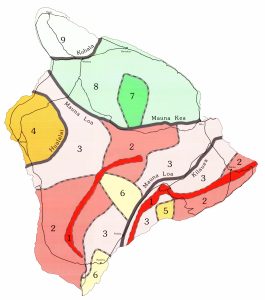
These volcanic hazard maps mark the regions that should evacuate if a volcanic eruption is imminent. If you happen to visit a place with an active volcano such as Hawaii, or have family living in such an area, it is a good idea to check whether they live in an area that would be most threatened by volcanic activity. In general, any community or city that is downslope from the volcano should pay careful attention to announcements about that volcano and potential evacuation orders [11].
Have A Plan
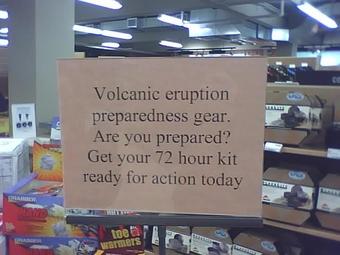
Never allow yourself to be unprepared for a potential disaster. This statement is correct for any situation; volcanoes, earthquakes, landslides, flooding, etc. Although your community should have a plan to mitigate the damage from a natural hazard at the city and state level, those policies are not a substitute for how you will react to a spontaneous disaster. If you live in a region affected by volcanoes, make sure that you do the following:
- Research the layout of your community and the geologic risks to it. Figure out a safe place that is likely to be less affected by a volcanic eruption and its hazards that you can quickly relocate to.
- Communicate the risks of a volcanic eruption to your family. Work together with them to come up with an emergency plan that each member will carry out should an eruption unexpectedly happen.
- Factor in unknowns such as family members getting separated or traffic blockages into your plan. Make sure everyone knows the way to your safe meeting place.
- Put together an Emergency Kit that contains at least a 3-day supply of food and water for everyone. Volcanoes, in particular, spew ash that is dangerous if inhaled. Make sure you add N95 face masks to this kit for you and your family members! [12]
BUILDING AN EMERGENCY PREPAREDNESS KIT
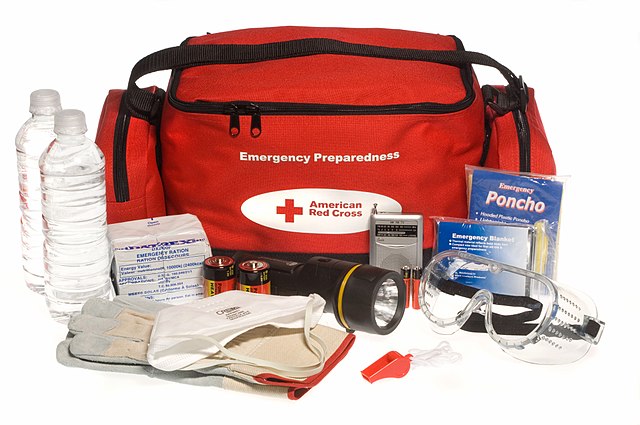
Having an emergency preparedness kit ready in your home is a great first step toward surviving any potential disaster. They may look really expensive at stores or online (such as the basic kit pictured above), but you can put together a really effective kit by yourself that may keep you and your loved ones safe!
How to Build Your Own Kit
Look for the basics around your home before you buy costly equipment. Just make sure that equipment still works before you put it together in your kit! Make sure you have the following:
- Non-perishable food that does not require fuel sources (i.e. microwave/oven) that can last up to 72 hours per person. Think food bars and canned food! Don’t forget a can opener!
- 1 Gallon of water for each person to last every day of the emergency. This amount should be about 3 gallons per person to last 72 hours.
- A flashlight with extra batteries.
- A radio! Many updates come on radio and they are more reliable if cell towers come down. There are also hand-crank powered radios that can be useful in a pinch!
- Personal protective equipment: face masks, goggles, and gloves will keep you safe and free from contamination and disease.
- Emergency cash: consider an emergency that knocks out the power grid and affects basic utilities, including the ability to pay electronically.
- Toilet paper and other sanitation products
- If applicable: Personal medications, pet food, solar chargers, flares, whistle, hand tools
When in doubt, go to https://ready.gov/kit/ for advice!
During the Eruption
Be sure that you are periodically monitoring updates from your local scientists on whether your volcano is becoming active. If there is some unrest, you will hear about it early, and have some time to prepare and perhaps evacuate!
If you are right near or on the volcano…
Hopefully, this won’t apply to you! However, if you are in the worst-case scenario of hiking a volcanic summit when it erupts, you can STILL protect yourself.
- Move away from the volcano as quickly as you can!
- Do NOT walk into any low-lying areas such as washes, ditches, valleys, etc. These are places that are prone to lava flows or lahars.
- Carefully read the signage posted by the forestry service as you go. You might be able to receive the life-saving information that a certain route is blocked off or closed! [13]
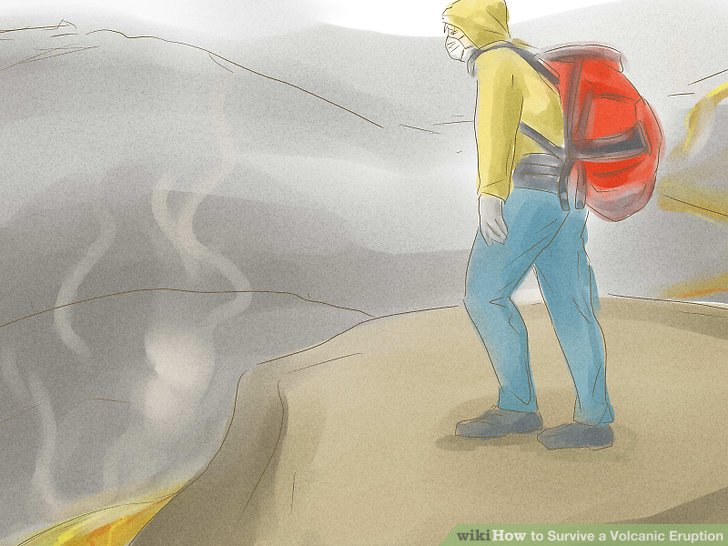
If you are downslope of the volcano…
This situation often applies to residents in the valley surrounding a volcano who have refused to evacuate or an area that has not sent out evacuation orders.
- Do NOT drive! The ash falling from volcanoes can clog engines and ruin infrastructure. Driving during an eruption should be your last resort.
- Seal your windows and doors. If your area is not affected by lahars and lava flows, it still might be affected by falling ash. Prevent it from getting into your home by taping off your windows and doors and shutting off your HVAC system (or limit it as much as possible!).
- Avoid the lowest relief areas, such as valleys, channels, washes, ditches, etc. These are the places where lahars and/or lava flows are likely to be, and therefore the most hazardous!
- Listen for announcements by officials and scientists about potential lahar warnings, lava flows, and other hazards. They will also let you know when it is safe to go outside or move. Using a radio for this is the most reliable method as cell phone towers and the internet will be unreliable. [13]
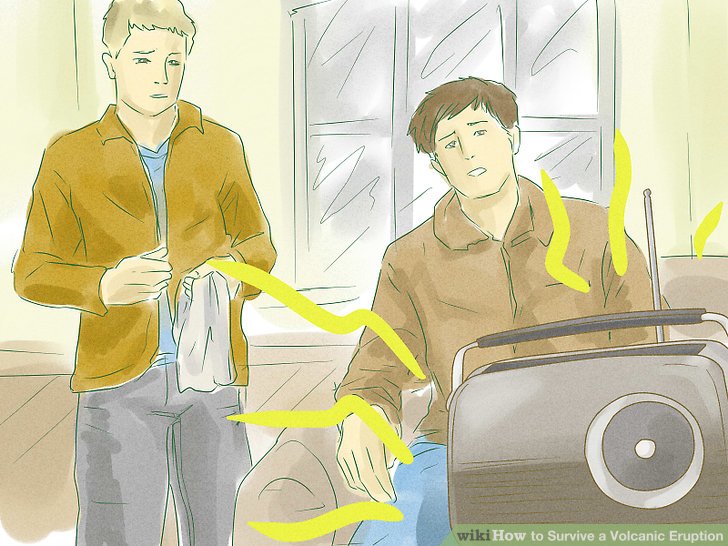
After the Eruption
- Do NOT approach cooling lava! It may look black and safe, but lava is insanely hot at temperatures over 1000°C. Appearances are deceiving, and sometimes lava is only cooled at the very surface.
- Avoid all areas around a potential lahar zone! These flows take a long time to solidify and they may occur repeatedly.
- Avoid cleaning your roof of ash–allow professionals to do this, and certainly do not attempt it until the ash has finished falling. If there is a significant amount of ash on your roof (multiple feet), consider evacuating for safety as the weight of ash can cause collapses.
- If you have breathing problems, continue to wear a mask to keep your airways safe from the unconsolidated ash deposits.
- Keep monitoring your area for announcements and potential secondary hazards that could make the eruption effects worse, such as rainstorms. [14]
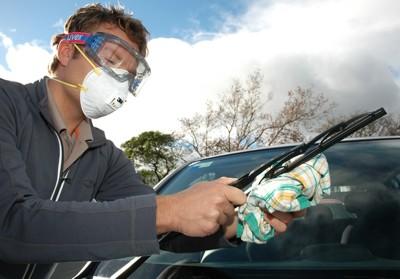
an extreme natural event that is a threat to life and property
A volcano that has erupted at least once over the past 10,000 years and has the possibility of erupting in the future.
molten rock that has erupted at the Earth's surface due to volcanic processes.
A mudflow, or type of mass movement, that is a mixture of water, ash, rock, sediment, and debris that rapidly and suddenly moves downslope. Lahars are a commonly associated hazard with volcanic eruptions.
A mixture of super-heated gas, ash, volcanic glass, and rock fragments that rapidly moves downslope from 60 to over 400 mph.
volcanically ejected rock fragments or particles that are less than 2 mm.

